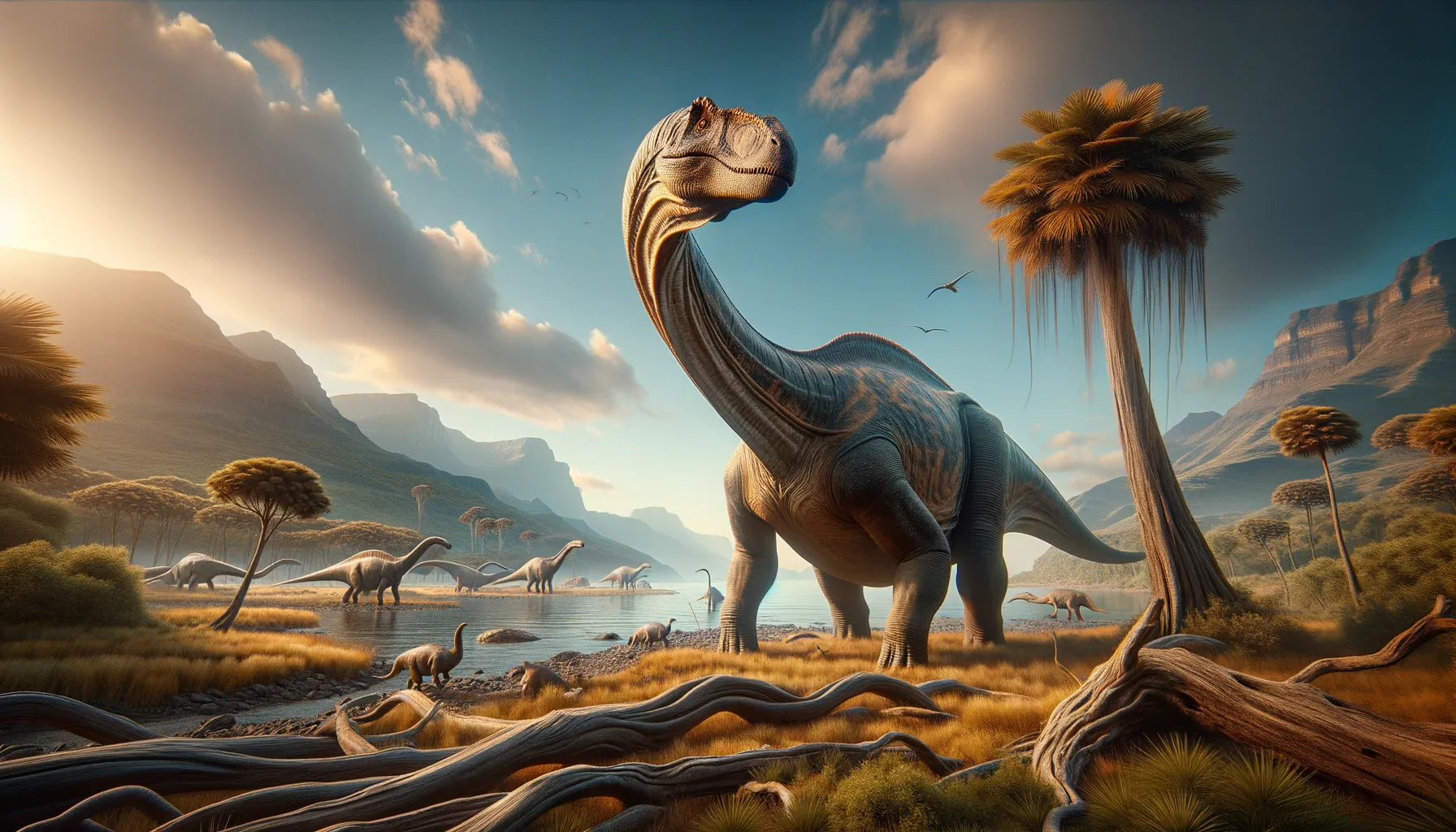
Atsinganosaurus
A Cretaceous giant roaming ancient Europe.
Period
Cretaceous
Length
Measured around 30 feet in length.
Height
Stood about 10 feet tall at the shoulders.
Weight
Weighed approximately 2 to 3 tons.
Atsinganosaurus was a medium-sized sauropod dinosaur that lived in the Late Cretaceous period. It is known from remains found in Europe, mainly in southern France. As a titanosaur, it is part of a diverse group of long-necked, herbivorous dinosaurs. Most interestingly, its discovery helps to shed light on the fauna that inhabited the European landmass during this time and gives us insights into the distribution of sauropods across what was then an archipelago.
Diet
Atsinganosaurus was a herbivore, primarily consuming plants. Its long neck allowed it to reach high-growing vegetation as well as ground-level flora.
Hunting
As a herbivore, Atsinganosaurus did not hunt. Instead, it would have used its size and long neck to browse for plants.
Environmental challenges
During the Late Cretaceous, Europe was a series of islands, presenting challenges in terms of food availability and migration. Changing sea levels might have occasionally isolated populations, influencing genetic diversity. Climate fluctuations could also have affected the growth of vegetation, thus impacting its food supply.
Speed
Atsinganosaurus likely moved at moderate speeds.
Lifespan
Estimated to live for several decades.
First discovery
Discovered in France in the early 2000s.
Fun Facts
- Atsinganosaurus was a titanosaurian sauropod dinosaur that lived about 70 million years ago during the Late Cretaceous period.
- This dinosaur's fossils were found in what is now southern France, giving it a European residence in prehistoric times.
- The name Atsinganosaurus means 'gypsy lizard,' a nod to its 'wandering' discovery far from where many other titanosaurs are typically found.
- Atsinganosaurus is known from partial skeletal remains, which include vertebrae and limb bones, helping scientists to estimate its size and shape.
- It is believed that Atsinganosaurus roamed in herds, feeding on vast quantities of vegetation with its long neck helping to reach higher foliage.
- Atsinganosaurus, like other sauropods, had massive bodies with long tails to counterbalance its neck, but remains agile enough to maneuver through forests.
- Despite its large size, Atsinganosaurus had a tiny head compared to its body, equipped with pencil-like teeth for stripping leaves.
Growth and Development
Atsinganosaurus, like other sauropods, hatched from eggs. Its growth rate would have been rapid initially, helping it to outgrow predators. As it matured, it continued to grow throughout life, albeit more slowly, reaching its full size over several decades.
Habitat
This dinosaur lived in what is today Europe, an area consisting of numerous islands during the Late Cretaceous. Its environment would have been rich in vegetation, providing ample food resources. The climate was likely warm, aiding in the proliferation of lush plant life which sustained herbivorous dinosaurs.
Interaction with other species
Atsinganosaurus coexisted with various other dinosaurs, both herbivores and carnivores. Its large size likely offered protection from predators, while its presence might have impacted plant life and thus the food sources for other herbivores. Competition for resources could have existed among herbivorous species sharing the same ecosystem.
Natural lifespan
Atsinganosaurus might have naturally lived for over 50 years.
Reproduction
Atsinganosaurus reproduced by laying eggs, which were likely buried or covered for protection until they hatched. Parental care, if any, is unknown but young sauropods generally relied on rapid growth for survival. The eggs were possibly laid in communal nesting sites to increase offspring survival chances.
Social behaviour
Atsinganosaurus may have lived in herds, a common behavior among sauropods that offered protection against predators. Social structures within the herd remain speculative, but group living would have facilitated resource finding and safer rearing of young.
Fossil locations
Fossils of Atsinganosaurus have been discovered primarily in southern France, specifically in Aix-en-Provence. This location offers valuable insight into the Late Cretaceous European ecosystem. The fossilized remains are crucial for understanding the distribution and diversity of saurian species on the European archipelago.
